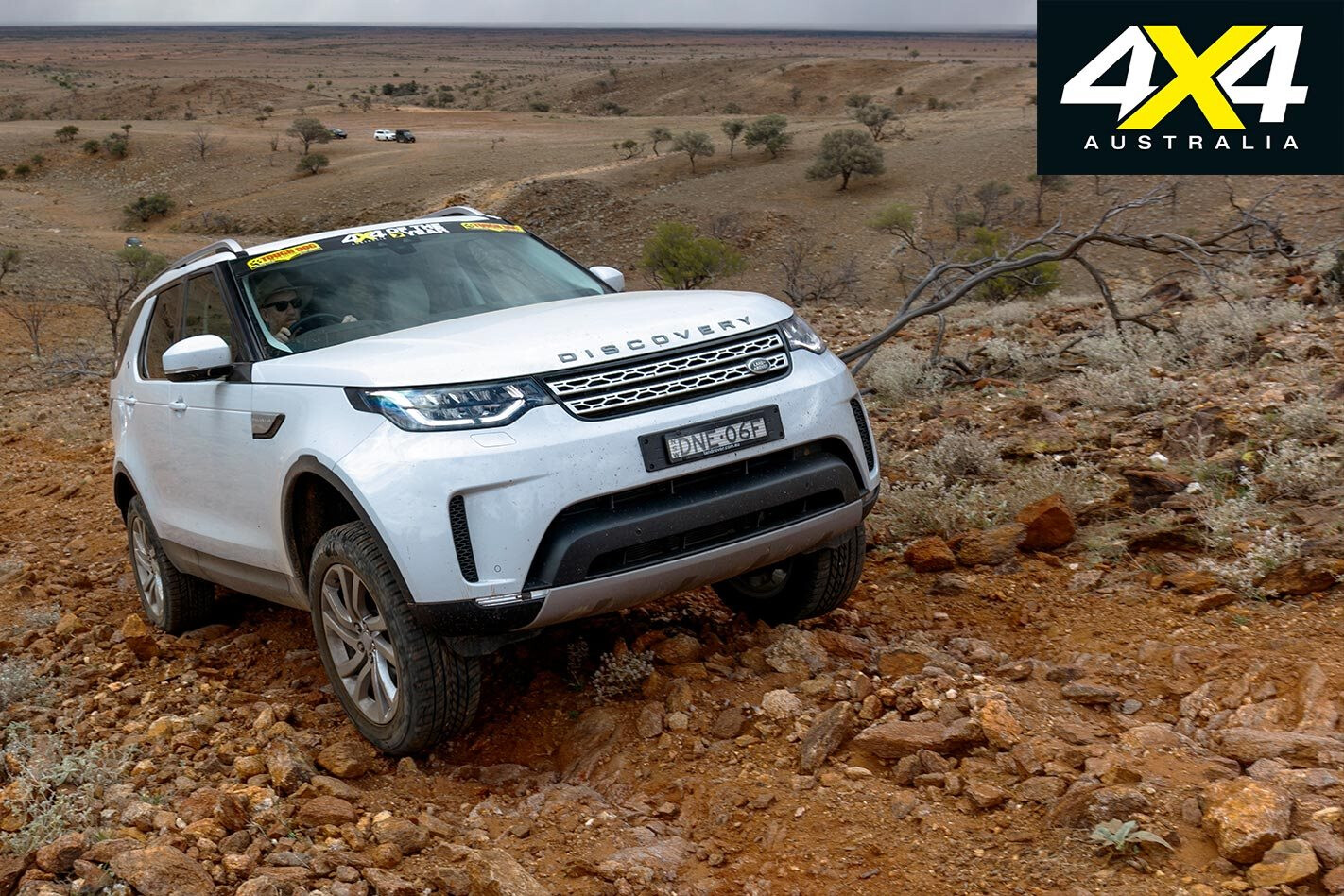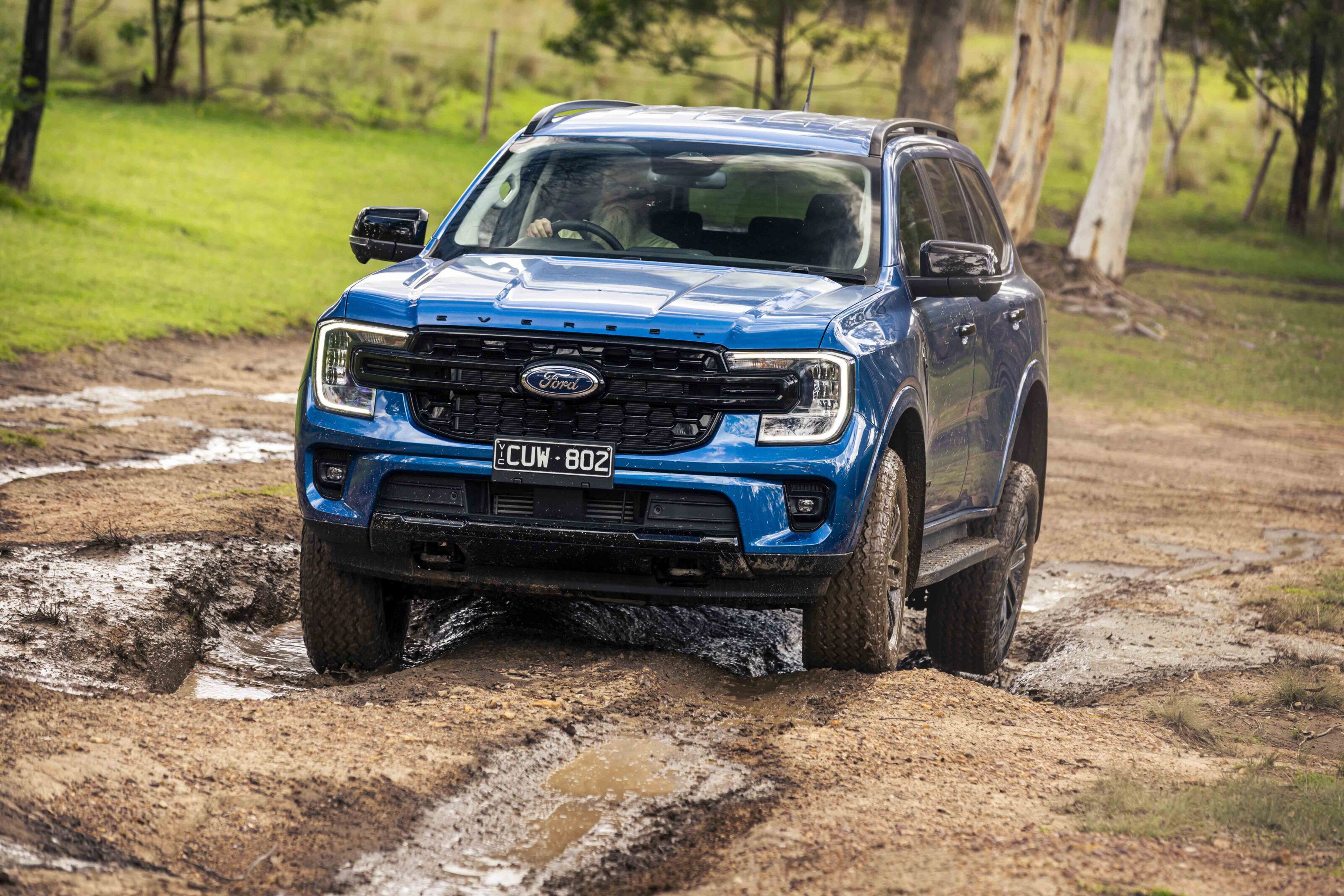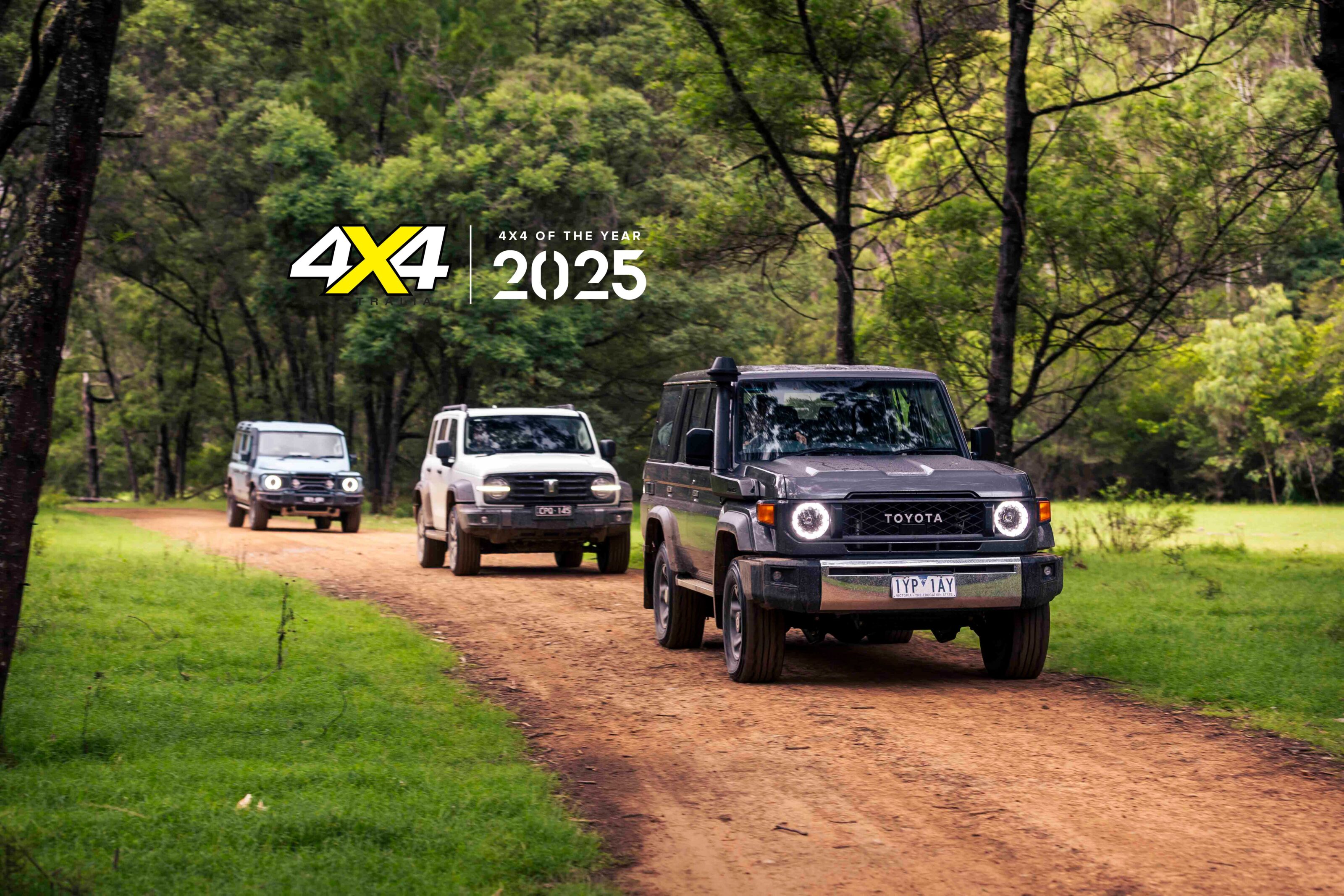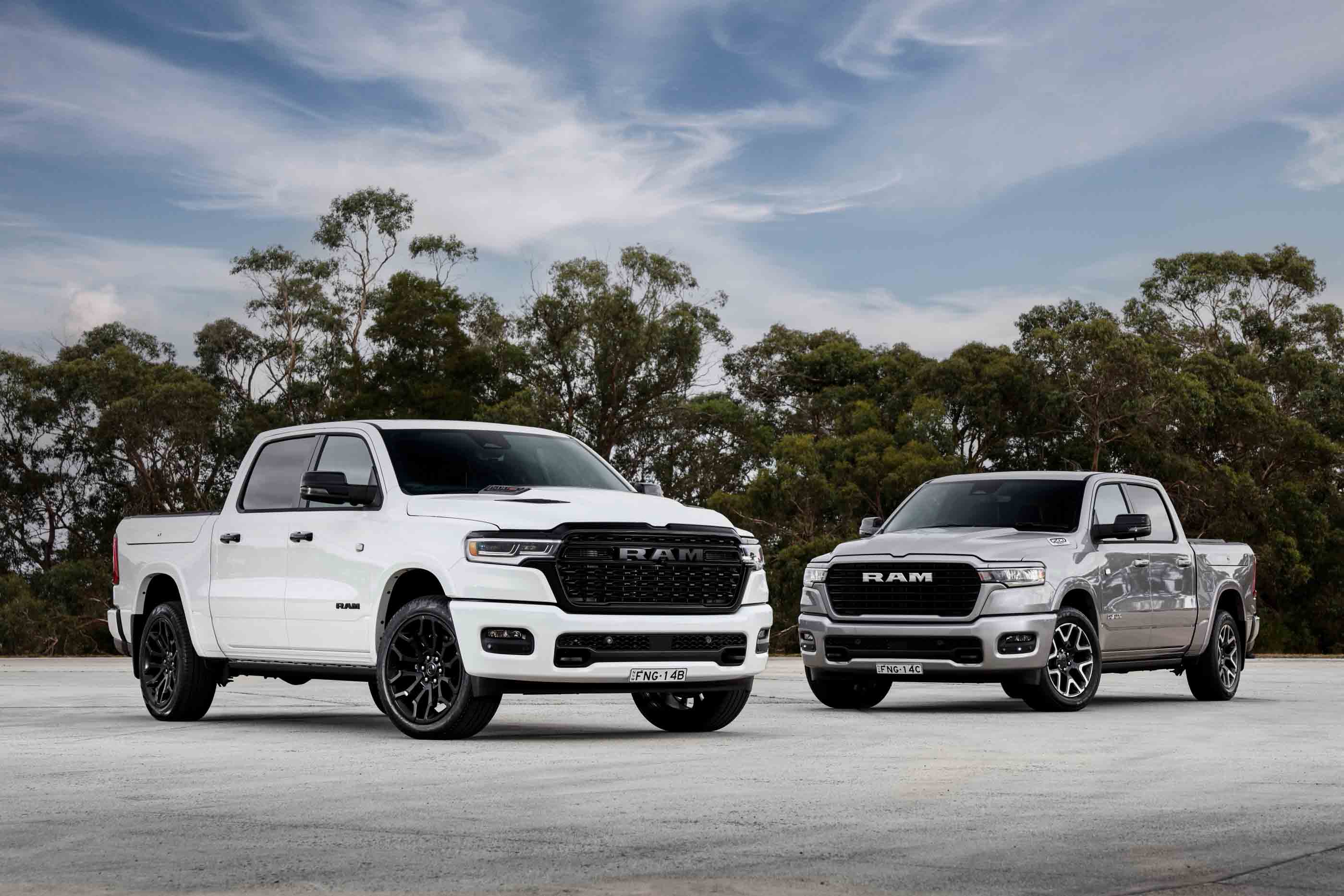What you see here is only the third new-from-the-ground-up Discovery in nearly 30 years and one that shares very little with its forebears.
Most significantly it’s a monocoque design whereas all previous Discoveries since the original debuted in 1988 have used a separate chassis, which is the traditional – some would say old-school – way to build a 4×4. However, this new Discovery is not just any monocoque but one fabricated largely from aluminium – 85 per cent, in fact – rather than steel. This makes it significantly lighter than the previous Discovery and brings wide-ranging benefits.
Land Rover isn’t new to building monocoque 4x4s, as the marque’s first appeared in 2002 in the form of the then-new third-generation Range Rover. This Discovery has been developed from the current Range Rover and Range Rover Sport, which debuted essentially the same aluminium monocoque platform in 2012. So while all this may be new to the Discovery, it’s certainly not new to Land Rover.
POWERTRAIN AND PERFORMANCE
This new-generation Discovery comes with three new diesel engines in Australia. What we have here is the Td6 – a 3.0-litre V6 and the premium engine in the Australian range – and two 2.0-litre fours. The V6 is available in all model grades and has been developed from the V6 diesel in the previous Discovery, but it drops the bi-turbo system for a simpler single turbo and introduces a new injection system and Euro 6 compliance, among other changes. Despite reverting to a single turbo, it claims 7kW more power (now 190kW) than the outgoing SDV6 – the more powerful of the two V6s in the previous Discovery – while its maximum torque of 600Nm comes on earlier than it did in the SDV6.
However, it’s the overall 400kg weight savings over the last-generation Discovery that makes this new Td6 Disco far livelier. It will sprint to 100km/h in just 8.1 seconds, whereas the previous SDV6 took 9.3 seconds and the less powerful (but still bi-turbo) TdV6 took 10.7 seconds.
The Td6 is more than a punchy and responsive engine, though; it’s also effortless and refined – even more so in this new Discovery – and is particularly relaxed and quiet at highway speeds. As ever, the super-slick and quick-shifting eight-speed ZF provides a wide spread of ratios to enhance low-speed response yet provide very long highway legs.
ON-ROAD
The Discovery’s lightweight aluminium monocoque rides on fully independent suspension with either coil springs (standard on the base model) or height-adjustable air springs (optional on base model and standard elsewhere).
This new Discovery also brings electric power steering, which reduces steering effort at parking speeds but firms up at highway speeds. On the road the Discovery can sometimes feel disconnected as it’s so effortless to steer and handle in normal driving situations, but it becomes more alive on winding and demanding roads.
The significant weight savings help dynamically and it feels poised and secure, even when road conditions deteriorate. Compared to competitor vehicles that offer similar off-road ability, the Discovery’s on-road handling is “sporty”, thanks in part to the height-adjustable air suspension allowing a relatively low ride-height as the default road setting and then automatically lowering the car further at highway speeds.
The ride itself is generally comfortable, too, but it still has a touch of firmness about it on the 255/55R20 tyres of the HSE. No doubt the 235/60R19s fitted to the S and SE models would provide a suppler ride on bumpier roads.
OFF-ROAD
The Discovery’s long wheel travel, aided by the height-adjustable suspension, provides 283mm of ground clearance as the default off-road setting (it can lift further if the vehicle is grounded) and is the starting point of a very capable 4×4. Add in a deep low range reduction (2.93:1), a self-locking and self-proportioning centre diff, the (inexpensive) option of a rear e-locker (not fitted to our still-capable test vehicle), adjustable chassis electronics (via Terrain Response) and a 900mm wading depth, and you have all the bases covered.
Well, almost all the bases. The tyres, at least the standard high-speed-rated (W, or 270km/h no less) items, are too fragile in the sidewall to be useful in rocky off-road conditions, even if they are okay on mud and sand, despite being designated as All Terrains. Given the Discovery’s smallest OEM wheel is a 19, the tyres are also relatively low profile, which places more demand on the sidewalls.
The good news is that this new Discovery has a one-size-taller tyre for any given wheel size than the Discovery 3 or 4 (a 255/60R19 replaces the previous 255/55R19; a 255/55R20 replaces the previous 255/50R20, etc.), which opens up the aftermarket tyre options considerably, especially in the 20-inch sizes.
CABIN AND ACCOMMODATION
Compared to the Discovery 3/4, the new Discovery’s body – honed in a wind tunnel as it has been – is longer, but not as tall or wide. In a cabin that feels very ‘Range Rover’ you sit lower and farther back than in the previous Discovery, in a driving position that’s not as commanding off-road but is more than comfortable otherwise. There’s plenty of adjustment, too, for taller or shorter drivers.
Despite the rejig of the body shape the new Discovery still has a big and comfortable second-row seat and, like the Disco 3/4, the best third-row in the business, LandCruiser 200 included. There’s decent luggage space, as the third row folds flat and the second row adjusts fore and aft (by 170mm) to optimise second-row leg space or rear load space. Somewhat controversially, the split tailgate has been dropped for a top-hinged single door; although, an internal lower ‘tailgate’, which helps keep items in the luggage area in place and is strong enough to sit on, is standard on some models and optional on others. All models also come as five-seaters for those who want the extra luggage space and don’t need the extra seats.
PRACTICALITIES
As you’d expect of a Discovery you get a high tow rating (3500kg), excellent payload capacity (827kg for the Td6, and more with other models) and a very high GCM – 6650kg for the Td6, which is 650kg more than the best of the dual-cab 4×4 utes. All models, bar the S, also come with a pre-wired factory-fit towbar.
But, as ever with Discovery, the fuel capacity (85 litres with the Td6) could be better; although, the significantly lower weight of this new model means lower fuel consumption and therefore more touring range.
Land Rover offers a good range of load-carrying accessories (various roof bars and pods, etc.) and items such as sidesteps, but no frontal protection… not even a nudge bar. At this stage there’s nothing from the aftermarket in the way of frontal protection or other functional enhancement. Whether that changes will depend on demand.
“Td6” EQUIPMENT
The least expensive V6, the ‘S’, has a single-range 4×4 system, standard coil-spring suspension and five manual-adjust cloth seats in a very basic car. Dual-range gearing is an additional $920, while height-adjustable air suspension is another $2060. Unfortunately the very useful rear e-locker is not available on the Td6 S as an option. If you want that you’ll at least need an SE. Even then the rear locker is an additional $1020; although, dual-range gearing and height-adjustable air suspension are standard on the SE, as is leather/electric adjust seats, sat-nav, an up-spec audio, LED auto headlights, LED DRLs, auto wipers, and a factory towbar. Those wishing to spend more can move up to the HSE or the HSE Luxury, or indulge themselves in the extensive array of options.
SUM UP
There’s no doubt this new Discovery is a significant step forward in terms of providing the virtues of a big, spacious, comfortable and refined 4×4 wagon in a package that also offers sporty on-road handling, strong performance, formidable off-road ability and benchmark fuel economy.
But it’s expensive, particularly so with the Td6 engine. If you want to go bush in your new Discovery you’ll also have to fork out for some more robust tyres. And, if you want a Td6 with maximum off-road ability (courtesy of the optional rear locker), you’ll need to start with an SE rather than the base S model.
LAND ROVER DISCOVERY Td6 PRICES* Td6 S: $78,750 Td6 SE: $92,650 Td6 HSE: $103,000 Td6 HSE Luxury: $116,800 *five-seat models only, seven seats optional. Prices don’t include on-road costs
LAND ROVER DISCOVERY Td6 HSE SPECS Engine: 3.0-litre V6 turbo-diesel Max Power: 190kW @ 3750rpm Max Torque: 600Nm @ 1750-2250rpm Gearbox: Eight-speed automatic 4×4 System: Dual-range full-time Crawl Ratio: 44.3:1 Construction: Monocoque Front Suspension: Independent/air springs Rear Suspension: Independent/air springs Kerb Weight: 2223kg (five-seater) GVM: 3050kg (five-seater) Payload: 827kg (five-seater) Towing Capacity: 3500kg GCM: 6650kg (five-seater) Fuel Tank Capacity: 85 litres ADR Fuel Claim: 7.2L/100km Test Fuel Use: 10.8L/100km Touring Range: 737km





